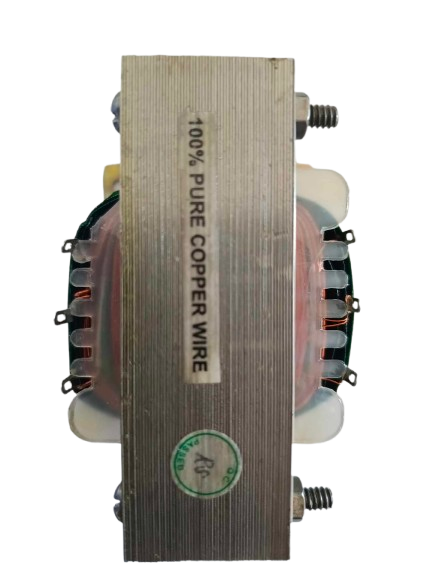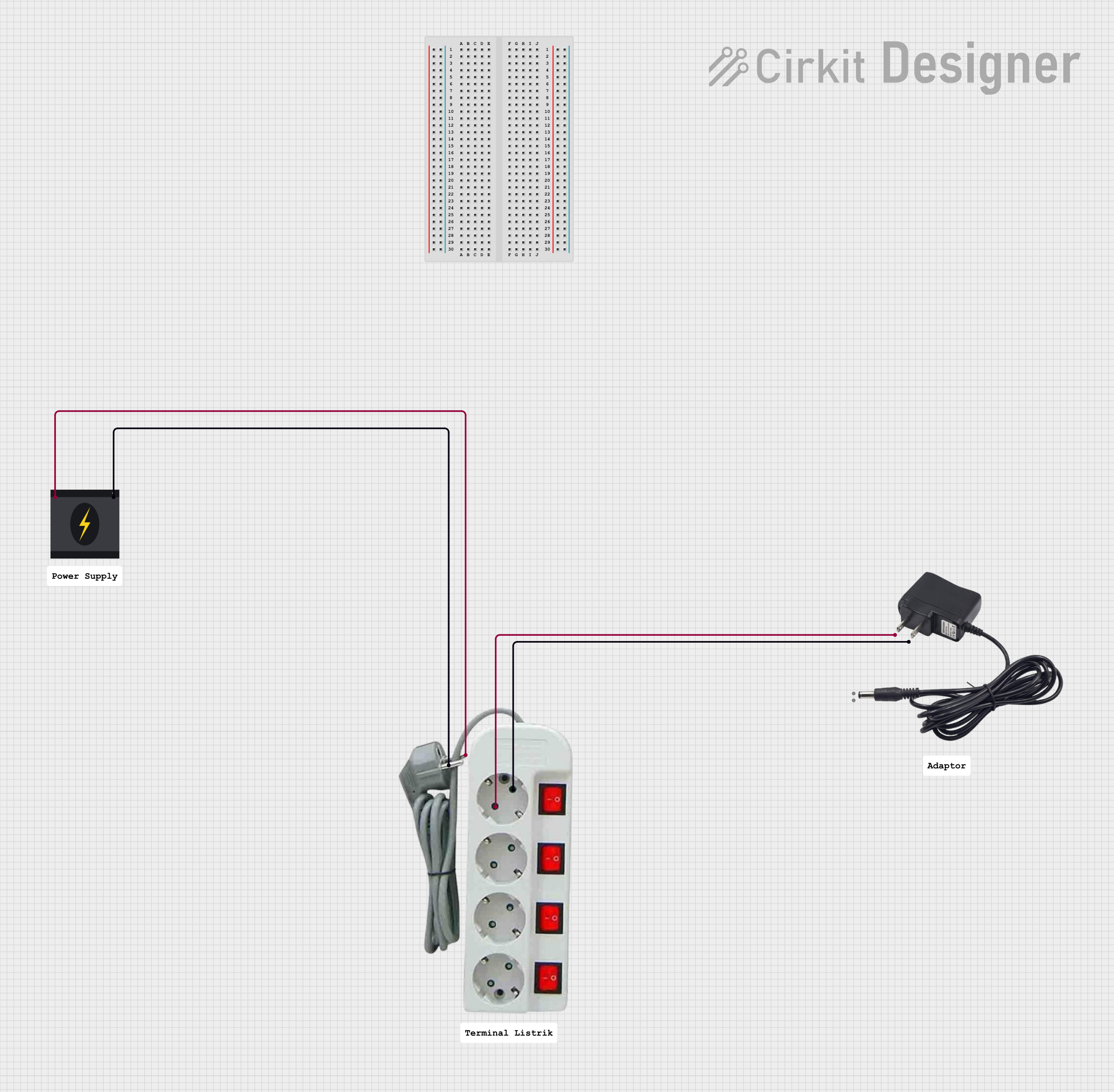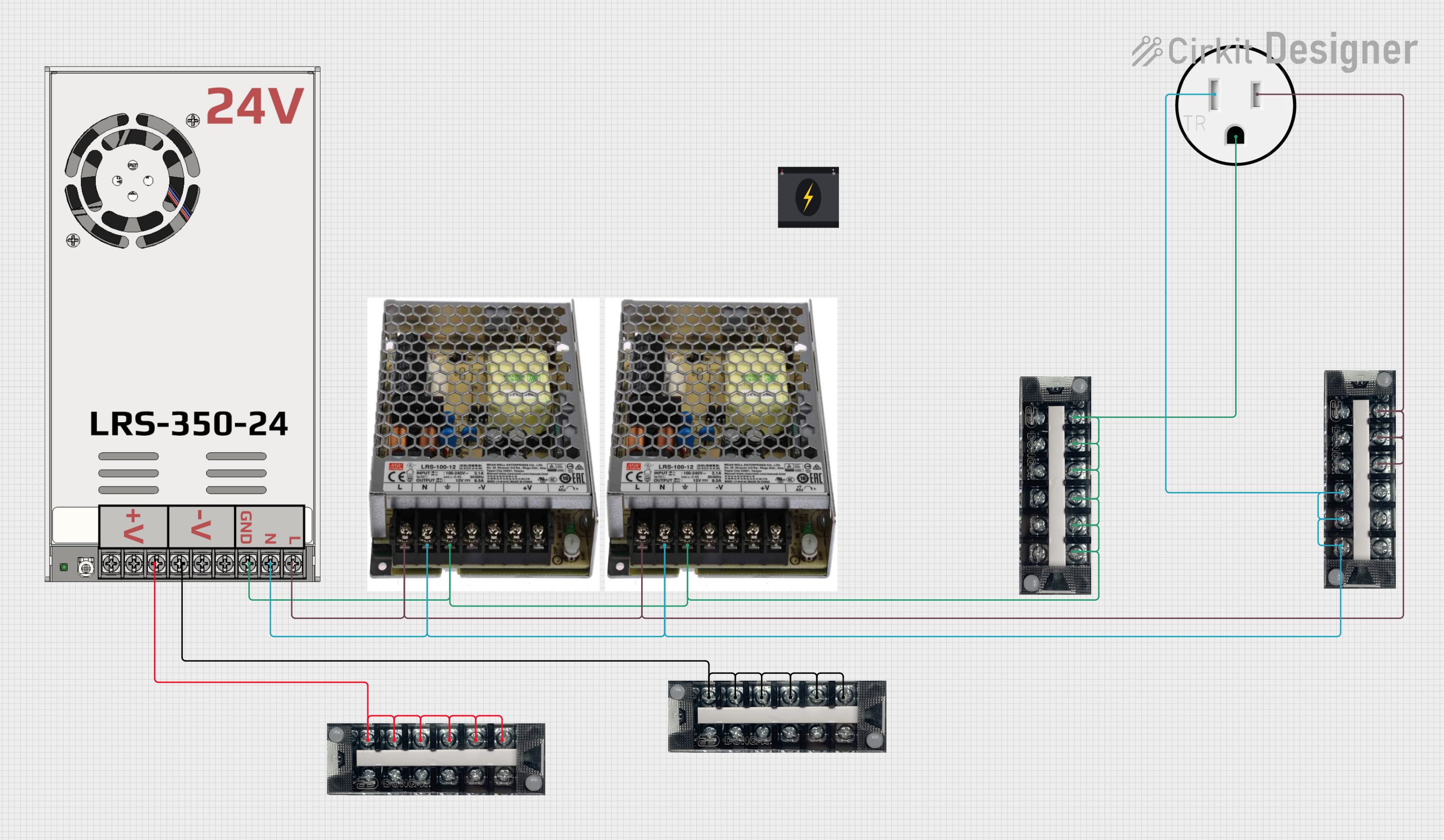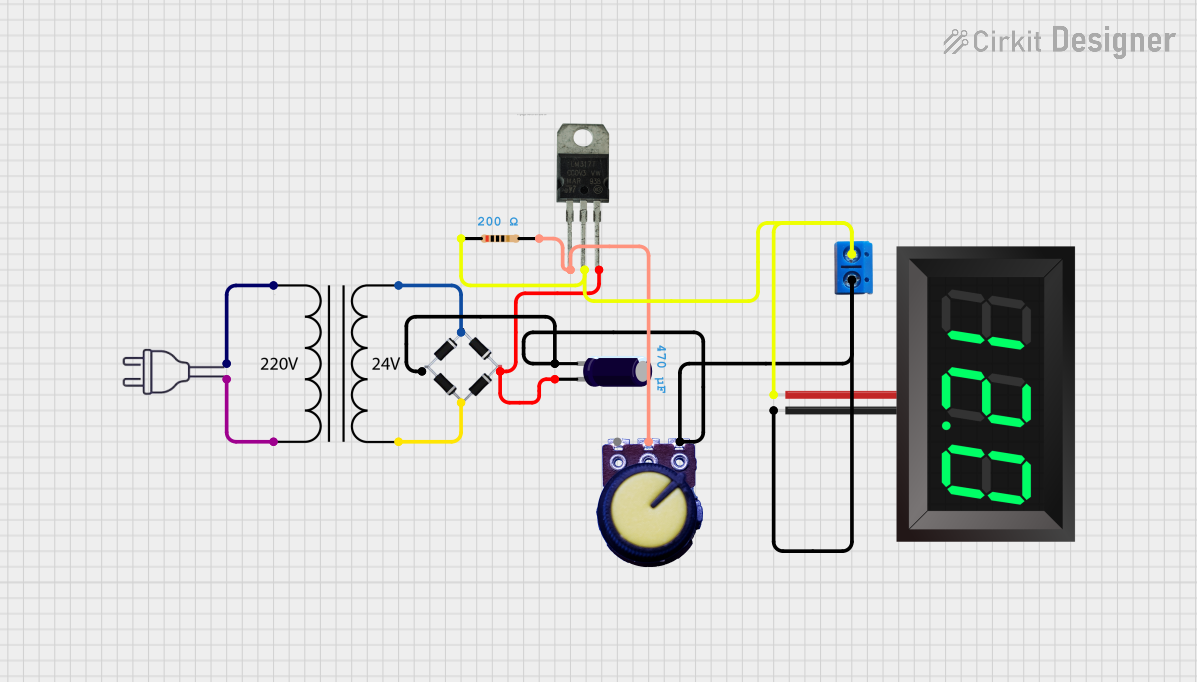
How to Use 220V to 12V Transformer: Examples, Pinouts, and Specs

 Design with 220V to 12V Transformer in Cirkit Designer
Design with 220V to 12V Transformer in Cirkit DesignerTamagawa 220V to 12V Transformer Documentation
1. Introduction
The Tamagawa 220V to 12V Transformer is a robust and reliable step-down transformer designed to convert high-voltage AC (220V) to a lower voltage AC (12V). This component is widely used in power supply circuits for various electronic devices, enabling safe and efficient operation of low-voltage systems. Its compact design and high efficiency make it suitable for both industrial and consumer applications.
Common Applications:
- Power supplies for electronic circuits
- Low-voltage lighting systems
- Home appliances
- Industrial control systems
- Battery chargers
2. Technical Specifications
The following table outlines the key technical details of the Tamagawa 220V to 12V Transformer:
| Parameter | Specification |
|---|---|
| Input Voltage | 220V AC ±10% |
| Output Voltage | 12V AC ±5% |
| Frequency | 50Hz / 60Hz |
| Power Rating | 24W |
| Efficiency | ≥ 90% |
| Insulation Resistance | ≥ 100MΩ |
| Operating Temperature | -10°C to 50°C |
| Dimensions | 70mm x 50mm x 40mm |
| Weight | 300g |
Pin Configuration and Descriptions
| Pin Number | Label | Description |
|---|---|---|
| 1 | Primary (L) | Live input for 220V AC |
| 2 | Primary (N) | Neutral input for 220V AC |
| 3 | Secondary (12V) | 12V AC output (positive terminal) |
| 4 | Secondary (GND) | 12V AC output (ground/negative terminal) |
3. Usage Instructions
How to Use the Transformer in a Circuit:
Input Connection:
- Connect the primary winding pins (Pin 1 and Pin 2) to a 220V AC power source.
- Ensure proper insulation and secure connections to avoid electrical hazards.
Output Connection:
- Connect the secondary winding pins (Pin 3 and Pin 4) to the load or circuit requiring 12V AC.
- If rectified DC is needed, use a bridge rectifier and filter capacitor after the transformer.
Mounting:
- Secure the transformer to a stable surface using screws or mounting brackets.
- Ensure adequate ventilation to prevent overheating.
Important Considerations:
- Overload Protection: Avoid exceeding the transformer's power rating (24W) to prevent damage.
- Fusing: Use a fuse on the primary side to protect against short circuits or overcurrent.
- Isolation: Ensure proper electrical isolation between the primary and secondary windings.
- Grounding: Ground the transformer casing (if applicable) for safety.
4. Example Circuit with Arduino UNO
The Tamagawa 220V to 12V Transformer can be used to power an Arduino UNO by converting the 12V AC output to DC using a rectifier circuit. Below is an example setup:
Circuit Diagram:
Transformer Output (12V AC):
- Connect the secondary winding to a bridge rectifier.
- Add a 1000µF capacitor across the rectifier output to smooth the DC voltage.
- Use a 7805 voltage regulator to step down the DC voltage to 5V for the Arduino UNO.
Arduino Connection:
- Connect the 5V output from the regulator to the Arduino's 5V pin.
- Connect the ground (GND) to the Arduino's GND pin.
Sample Code for Arduino:
// Example code to blink an LED using Arduino UNO
// Ensure the Arduino is powered via the 5V regulator output
const int ledPin = 13; // Built-in LED pin on Arduino UNO
void setup() {
pinMode(ledPin, OUTPUT); // Set LED pin as output
}
void loop() {
digitalWrite(ledPin, HIGH); // Turn the LED on
delay(1000); // Wait for 1 second
digitalWrite(ledPin, LOW); // Turn the LED off
delay(1000); // Wait for 1 second
}
5. Troubleshooting and FAQs
Common Issues and Solutions:
| Issue | Possible Cause | Solution |
|---|---|---|
| No output voltage | Loose or incorrect connections | Check all connections and ensure proper wiring. |
| Transformer overheating | Overload or short circuit | Reduce load or check for short circuits. |
| Output voltage too low or unstable | Faulty rectifier or capacitor | Replace the rectifier or capacitor. |
| Humming noise | Loose mounting or magnetic interference | Secure the transformer and reduce interference. |
FAQs:
Can this transformer be used with DC input?
- No, this transformer is designed for AC input only.
What is the maximum load this transformer can handle?
- The transformer can handle a maximum load of 24W.
Can I use this transformer to power a 12V DC device?
- Yes, but you will need a rectifier and filter circuit to convert the 12V AC output to DC.
Is the transformer safe to use without grounding?
- Grounding is recommended for safety, especially in high-power applications.
6. Safety Precautions
- Always disconnect the transformer from the power source before making any connections.
- Avoid touching the primary winding terminals while the transformer is powered.
- Use proper insulation and enclosures to prevent accidental contact with live wires.
- Do not operate the transformer beyond its rated power or temperature limits.
This documentation provides a comprehensive guide to using the Tamagawa 220V to 12V Transformer effectively and safely. For further assistance, refer to the manufacturer's datasheet or contact Tamagawa's technical support team.
Explore Projects Built with 220V to 12V Transformer

 Open Project in Cirkit Designer
Open Project in Cirkit Designer
 Open Project in Cirkit Designer
Open Project in Cirkit Designer
 Open Project in Cirkit Designer
Open Project in Cirkit Designer
 Open Project in Cirkit Designer
Open Project in Cirkit DesignerExplore Projects Built with 220V to 12V Transformer

 Open Project in Cirkit Designer
Open Project in Cirkit Designer
 Open Project in Cirkit Designer
Open Project in Cirkit Designer
 Open Project in Cirkit Designer
Open Project in Cirkit Designer
 Open Project in Cirkit Designer
Open Project in Cirkit Designer